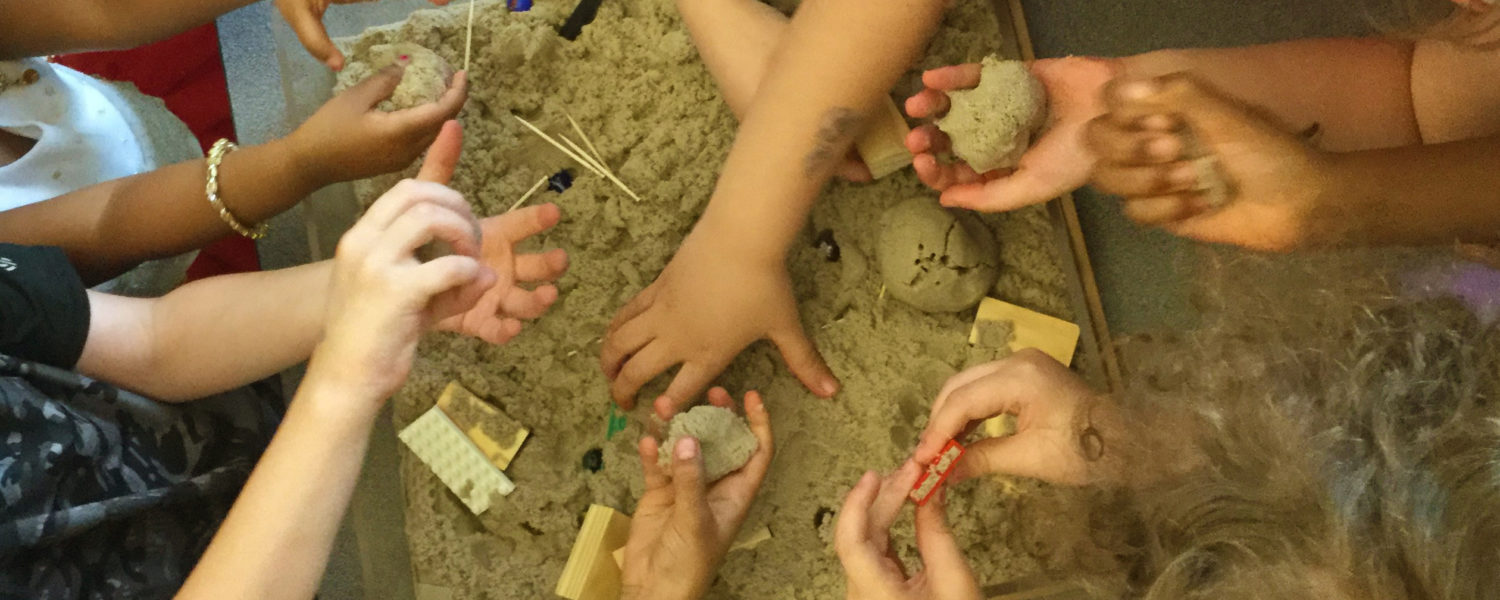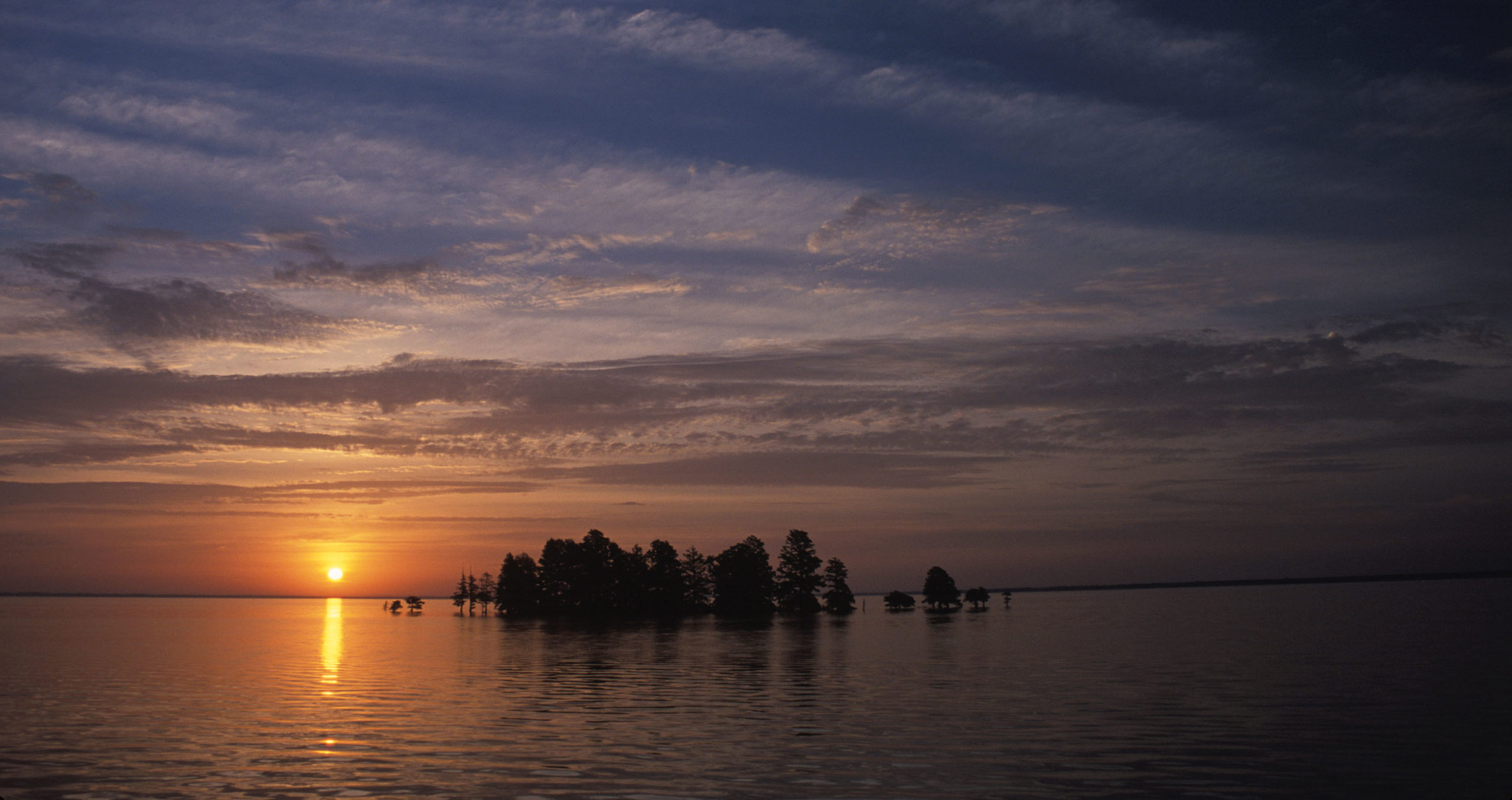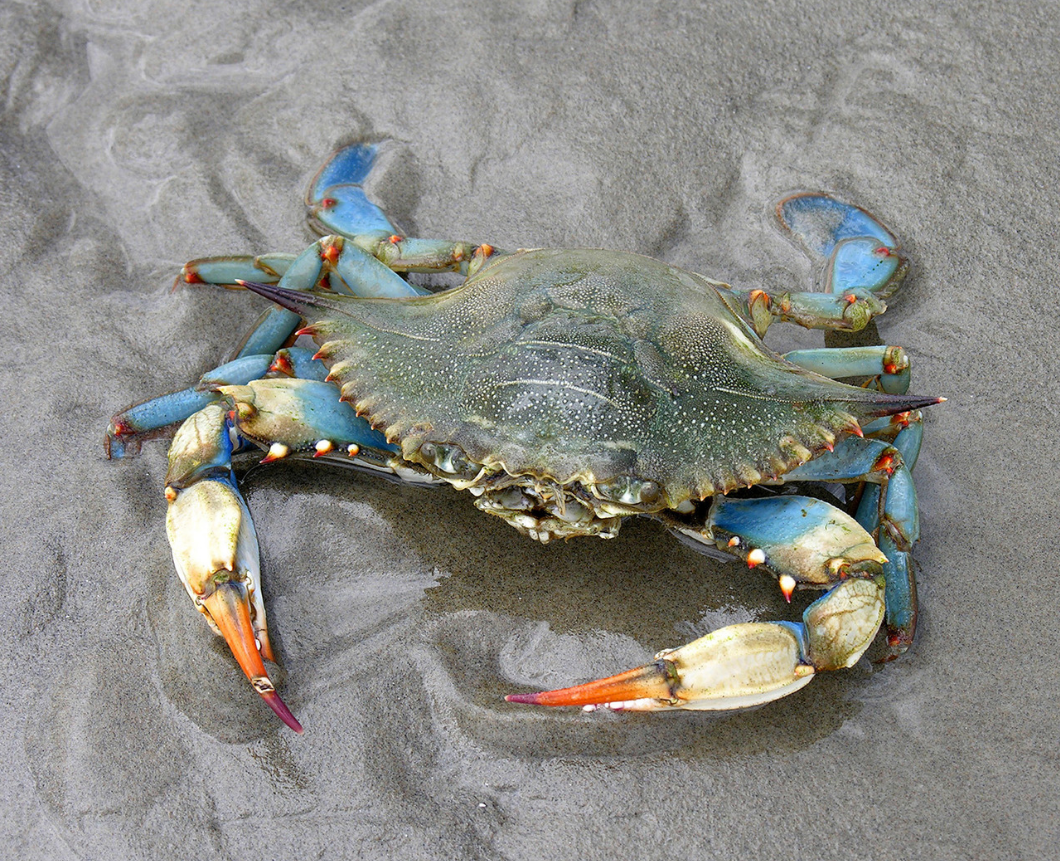Contamination from large rain events like Hurricane Florence can severely affect water quality. How does the state ensure that shellfish are safe to eat?
As Hurricane Florence bore down on North Carolina last September, Chef Craig Love was concerned foremost about the safety of his family and coastal community, Carolina Beach. But as the founder of Surf House Oyster Bar and Surf Camp — located about 12 miles southwest of Wrightsville Beach, where the storm’s eye made landfall — he also was anxious about the potential impacts on the state’s seafood supply
Love’s restaurant, which celebrates its 10th anniversary this August, locally sources the majority of its seafood. After Surf House reopened to guests post-Florence, “the first question they had when they sat down was, ‘Is it okay for us to eat the seafood here?’” Love recalls.
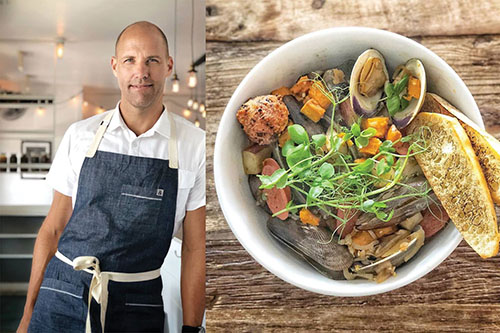
Diners inquired about various seafood products. Among them were “oysters, for sure,” Love says.
It’s understandable that consumers would be concerned about the hurricane’s potential effects on their shellfish. Oysters, clams and mussels are rooted to their environment, so they can’t simply swim out of polluted waters. They’re also filter feeders, meaning that they strain food from the surrounding water through their gills. With that nourishment, however, they also can take in bacteria and viruses, as well as pollutants.
What’s more, “they concentrate any contaminants that might have been in the water, sometimes 10, 100, even 1,000-fold,” says Rachel Noble, an environmental microbiologist with the University of North Carolina at Chapel Hill’s Institute of Marine Sciences (IMS) in Morehead City. Consuming raw shellfish that contain high concentrations of certain bacteria or viruses can lead to gastrointestinal illness such as diarrhea, vomiting, nausea — and worse.
With Florence’s torrential rain came massive flooding carrying a concoction of sewage and animal waste, among other contaminants.
“You could visibly see that there was contamination in the system, and — I’ll be honest with you — in a lot of areas, you could smell it,” says Noble, describing the odor as an acrid, “awful stink” reminiscent of strong organic compost, fecal waste and chemicals.
Washing Downstream
During the month following the hurricane, the state’s Division of Water Resources (DWR), part of the N.C. Department of Environmental Quality (DEQ), received notifications of 80 wastewater bypasses at 61 treatment facilities across the state. Those breaches released nearly 62 million gallons of partially treated and untreated wastewater to surface waters.
In addition, DWR learned of 516 sewer overflows at 149 systems, resulting in nearly 55 million gallons of untreated wastewater coursing into surface waters.
Did that sewage reach shellfish harvest areas? It’s highly likely, according to DWR.
The division also received reports from swine farmers that 33 waste lagoons brimmed and ran over the top of the dike wall. There was evidence, too, that some poultry farms were inundated.
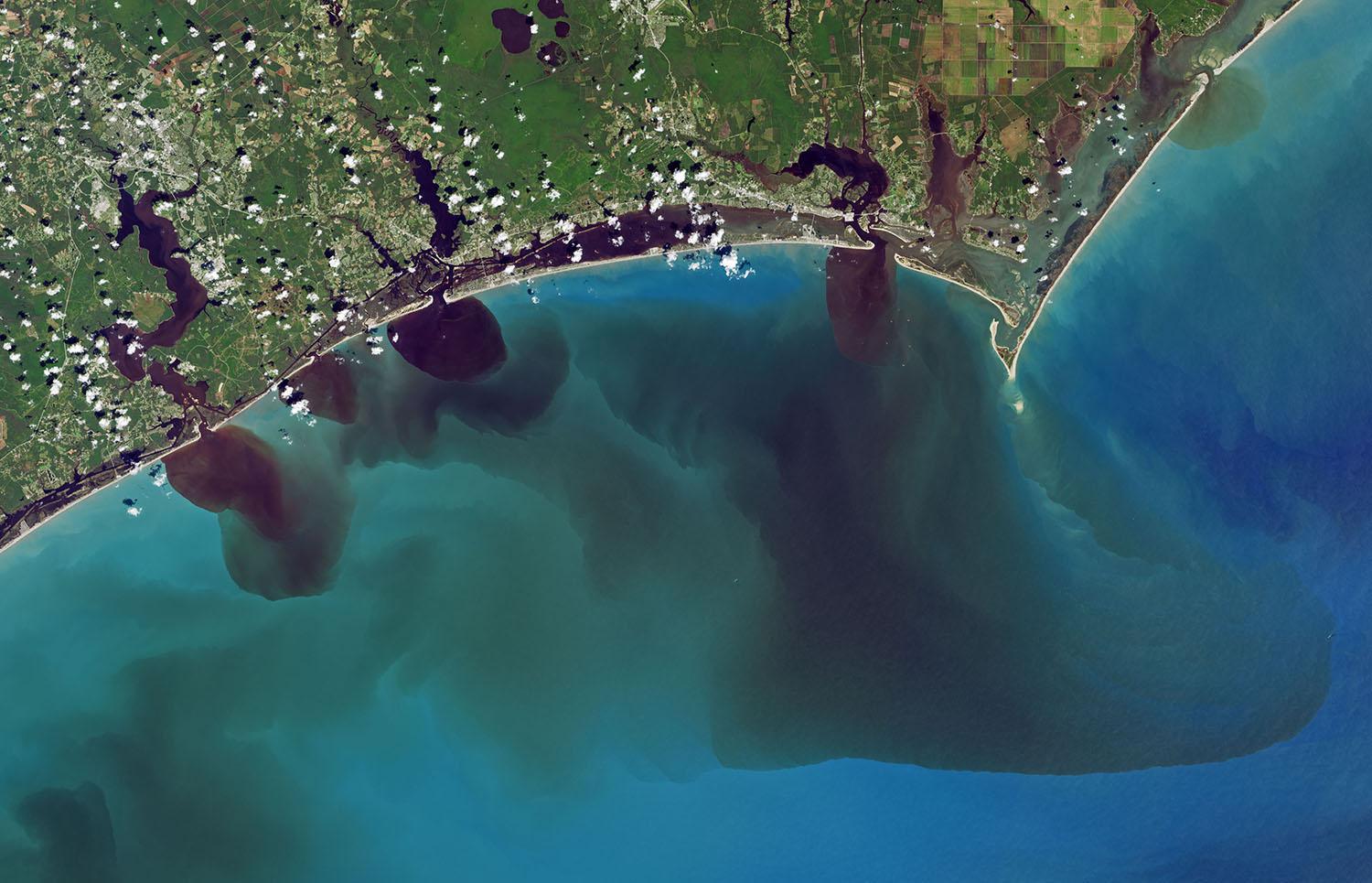
It’s possible that hog and poultry waste traveled to shellfish harvest areas. But the most heavily affected areas primarily were in inland counties or in places that don’t drain directly to shellfish waters, according to DWR.
While DWR did not investigate or receive reports of harmful algal blooms associated with Florence, “it is too early to tell what the runoff following Hurricane Florence has in store,” according to Hans Paerl, a marine and environmental scientist at IMS. “Stay tuned for what might happen this summer, as the sediments that entered our estuaries from last fall’s storm are still releasing nutrients that could fuel algal blooms in those estuaries as well as Pamlico Sound.”
(The N.C. Division of Water Resources recently published a water quality report related to Hurricane Florence called “Report: Survey of Surface Water Quality Associated with Hurricane Florence, September 2018.”)
Safety First
To ensure that North Carolina shellfish reaching the market are safe to eat, the state’s Division of Marine Fisheries (DMF), part of DEQ, oversees the North Carolina Shellfish Sanitation Program.
This program, which follows federal guidelines, is responsible for monitoring and classifying waters for the state’s bivalve mollusks, which primarily consist of oysters and clams, but also include mussels and scallops. There are four major types of classifications, explains Shannon Jenkins, DEQ’s Shellfish Sanitation and Recreational Water Quality Section chief.
“Approved waters are the waters that are open most all the time,” he says. They’re “the least impacted by any kind of pollution, and generally only close under emergency conditions, like a hurricane.”
Next are conditionally approved waters, which have two sub-categories. Conditionally approved-open waters stay open almost all the time, he says, but rainfall and other periodic events can warrant temporary closings. Meanwhile, conditionally approved-closed waters are generally closed, except during certain periods when they’re deemed safe for harvesting — say, during a drought, when stormwater runoff, and hence contamination, is low.
Restricted waters, meanwhile, are closed to shellfish harvested for direct consumption, Jenkins says. However, their pollution levels are low enough that shellfish removed from those areas and placed into approved waters will eventually be safe to eat. Indeed, over time, shellfish are able to rid themselves of contaminants. “They self-cleanse,” Jenkins says.
The last classification is prohibited waters. “At this time, no shellfish are allowed to be harvested from waters classified as prohibited,” Jenkins says.
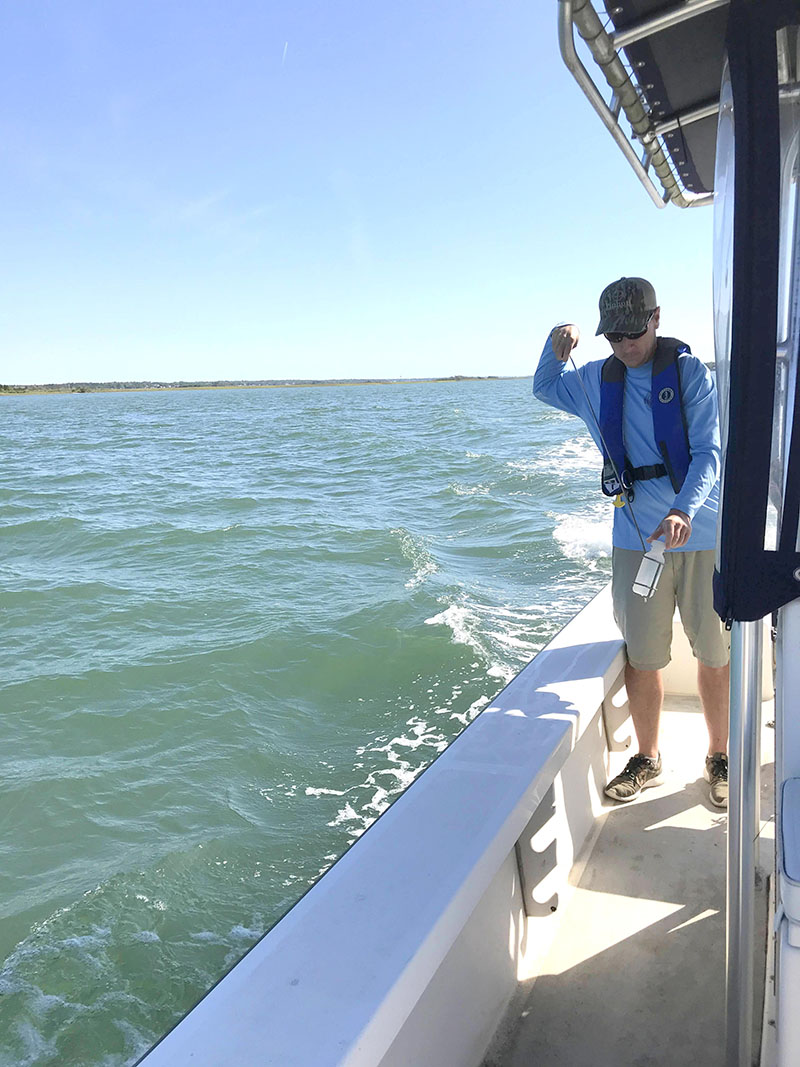
The state uses a set of stringent protocols to classify shellfish harvest areas.
For starters, over the course of a year, the shellfish sanitation team collects water samples from hundreds of locations throughout the areas open to shellfish harvest, as well as in some closed areas. They do this at least six times, randomly, at each location. Two state labs then test those water samples for fecal coliform bacteria — that is, bacteria that are characteristically found in the gut and feces of animals and humans.
Most fecal coliform bacteria are not disease-causing, or pathogenic. We all have “good” E. coli residing in our bodies, for example. But where good fecal bacteria reside, “bad” bacteria or viruses also might be lurking. The presence of fecal coliforms in a water sample can thus serve as indirect evidence of pathogens in the source water.
In addition to water sampling, at least every three years the shellfish sanitation team conducts shoreline surveys that offer further insight into water quality. “We have a number of shoreline surveyors who go along waterfront properties and up in the watersheds and visit businesses and homes to identify potential and actual sources of pollution” that could affect shellfish harvest areas, Jenkins explains. Such sources could be farms, marinas or septic systems, for instance. Surveyors work with DWR to evaluate wastewater treatment plants and collections systems as well, Jenkins adds.
The program also periodically examines meteorological and hydrographic factors — the physical features of water bodies, such as tides and currents — to understand how they influence water quality. Those investigations include studies of point-source discharges, such as from industrial plants or wastewater treatment plants, to determine if buffer zones are adequate in the event of a malfunction or other potentially contaminating event.
Data collected from water sampling, shoreline surveying and weather and water studies form the basis of a comprehensive report known as a sanitary survey. “That’s what we use to classify the waters for shellfish harvest,” Jenkins says. The Shellfish Sanitation Program produces a report at least every three years for each of 55 designated “growing areas” where shellfish are harvested.
If you’re wondering about chemical contaminants such as per- and polyfluoroalkyl substances, or PFAS, the Shellfish Sanitation Program does not regularly test for those. It instead relies on its classification system to limit harvest from areas prone to chemical contamination, Jenkins says. For instance, most of the Cape Fear River is permanently closed to shellfish harvesting.
What about toxins associated with algae? Harmful algal blooms (HABS) affecting shellfish are rare occurrences in North Carolina, according to Jenkins. “The last issue we had regarding HABs and shellfish was in 1987 due to the red tide event,” he says. When necessary, the Shellfish Sanitation team works collaboratively with state and federal agencies and local academic researchers to screen for harmful algal species and test for toxins.
Jenkin and his team remain vigilant on a day-to-day basis, too. After certain amounts of rain, for example, they close affected conditionally approved areas for a short time period until they can complete bacteriological testing. “We know that if it rains a lot, it’s going to wash sediment and bacteria from the land directly into the water,” Jenkins says, “and temporarily, those waters will be not safe for shellfish harvest because of all the bacteria and other potential pathogens in the water that the shellfish are taking up.”
In the case of Hurricane Florence, the program consulted with the state health director and preemptively closed all shellfish harvest areas on Sept. 13, a day before the storm made landfall. The state anticipated impacts to those areas, Jenkins says, and “we knew that we would have to assess issues after the storm.”
During the closure, Jenkins’ team worked with DWR and other agencies and municipalities to monitor rainfall totals, flood reports and wastewater treatment problems.
They used that information to evaluate which harvest areas could be reopened and when. Some northeastern areas were spared major water quality impacts and reopened quickly, Jenkins says. Others in the central and southern parts of the state took longer, as drainage from ditches and rivers, failing wastewater infrastructure and sewage discharges were addressed.
In addition, the shellfish sanitation team contacted as many shellfish dealers as possible, either by phone or in person, to ensure that no product was sold at dealer locations that had been affected by floodwaters or power outages.
By sunrise on Oct. 27, about six weeks after Florence made landfall, all areas typically open to shellfish harvest were back in business. As Jenkins puts it, when it comes to shellfish monitoring, there’s a lot of work “that goes behind the scenes.”
Effects from Florence were particularly problematic for N.C. shellfish farmers. The state’s up-and-coming shellfish aquaculture industry lost around $8 million in product, according to Chuck Weirich, North Carolina Sea Grant’s marine aquaculture specialist.
“Not only did many producers lose a lot of product from the storm, the inability to harvest and supply product to their markets for an extended period of time definitely hurt their businesses,” he says.
“However, the industry as a whole understands the closures and strives to make sure that the shellfish harvested from their farms is safe to enjoy.”
What About Vibrio?
If you’ve ever eaten raw shellfish, you might be aware of the concern over bacteria known as Vibrio. Certain strains of Vibrio are pathogenic, and can cause maladies ranging from gastrointestinal upset to bloodstream infections and skin lesions, according to the Centers for Disease Control.
Unlike fecal coliform bacteria, Vibrio are naturally found in the environment. Nearly 100 species of Vibrio bacteria have been described, and they exist in a wide array of aquatic niches.
In North Carolina, the two pathogenic species of concern are Vibrio vulnificus and Vibrio parahaemolyticus, according to Noble of IMS. “They don’t like fresh water, but they don’t like full salt ocean water, either,” she says. They’re found in estuaries — as many bivalves are — and thrive in warm, stagnant water.
When Vibrio encounter an accommodating environment, Noble says, they’re “going to be extremely happy and capable of reproducing very, very rapidly. In fact, they can double every 10 to 20 minutes, she says.
In July 2018, Noble co-authored a study appearing in Applied and Environmental Microbiology, funded by the National Science Foundation and the UNC Research Opportunities Initiative, that used genetic sequencing to characterize Vibrio communities in the Neuse River Estuary, near Pamlico Sound. (The estuary is closed off to shellfish harvesting). They found dramatic changes in the overall Vibrio population following Hurricane Matthew, which struck the East Coast in 2016.
Notably, V. vulnificus became “much more prolific” post-Matthew, the authors write, likely for two primary reasons. For one, freshwater discharge diluted the salinity of the estuary to levels at which V. vulnificus can survive, but which may have negatively affected its competitors. And two, the species might have exploited an influx of nutrients in the organic runoff.
Noble and her team have continued to monitor Vibrio in the Neuse River Estuary and are currently analyzing samples taken before and after Hurricane Florence.
She notes that the storm’s drenching rains followed a summer that already had been “incredibly, incredibly wet.” After the hurricane, a hot period ensued. During that time, “we saw some very interesting dynamics in the Vibrio populations that we were following,” says Noble, who has received N.C. Sea Grant funding in the past. Genetic results will reveal more about the pathogenic nature of those bacteria — and help shellfish growers protect their product, she adds.
But one thing already is clear: “We need to understand more about the effects of storms on Vibrios, and therefore understand more about the effects of those Vibrios on shellfish,” she says.
The state does not regularly test for Vibrio, because it’s a naturally occurring pathogen. But Jenkins says that measures are in place to counteract the post-harvest growth of bacteria. For example, certified shellfish dealers are required to receive and adequately refrigerate any shellfish obtained from licensed harvesters within a certain time frame from the start of harvest. “So, after harvest, we’re looking at sanitation practices related to shellfish as well,” he says.
Moving Forward
Are North Carolina shellfish safe for consumption post-Florence? As Jenkins said during a March interview, “we’re talking over six months since that event, and shellfish are safe.”
Noble agrees. “Certainly, by the time 2019 rolled around, I would venture to say that the majority of microbial contaminants that had been concentrated during Hurricane Florence would have disappeared.”
The state is not aware of any illnesses from shellfish consumption linked to Florence, according to Jenkins. It did investigate two restaurant-related cases of illness caused by Vibrio, reported last October, but could not trace the product to a specific location, either in or out of North Carolina, he says.
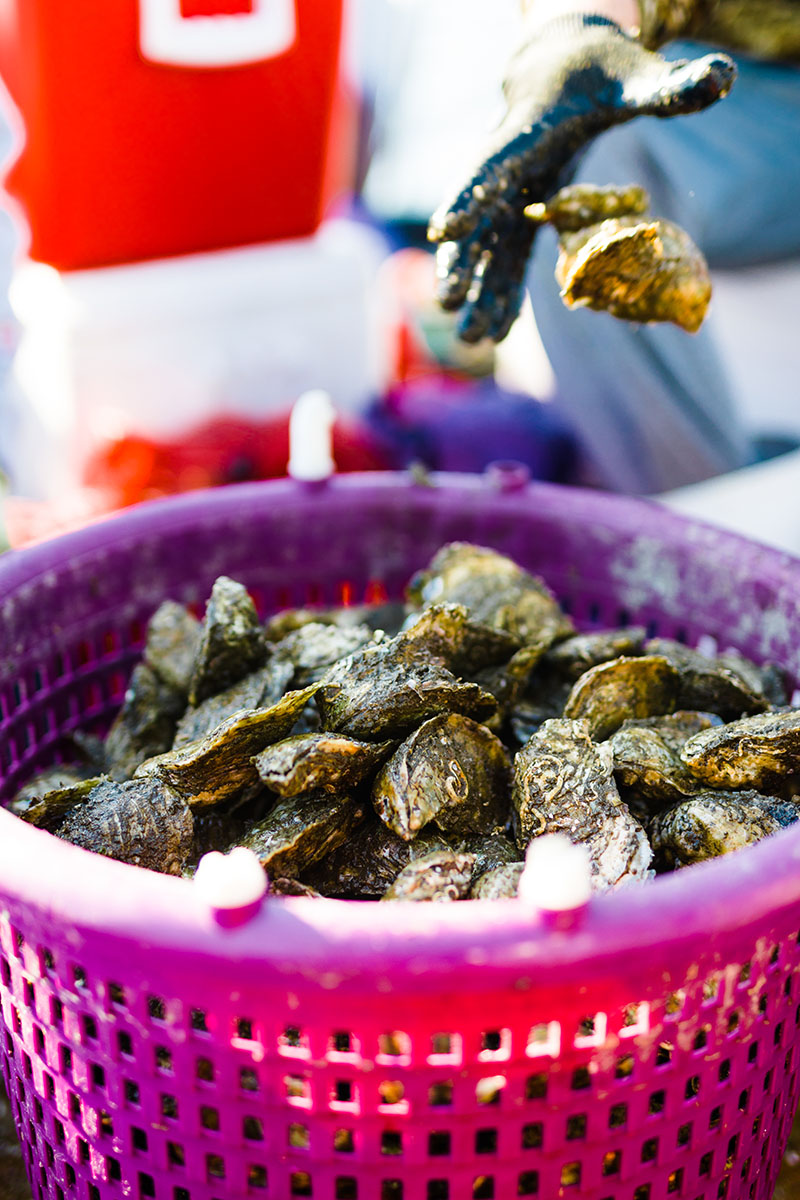
Noble says that North Carolina has “an excellent reputation” when it comes to monitoring shellfish. “We have protected North Carolinians from these kinds of outbreaks using this fecal coliform system for decades,” she says. She adds, however, that “our systems are designed for normal conditions.” Major storms like Florence “pose a dramatic scenario.”
Sampling water isn’t a perfect proxy for sampling shellfish meat. They don’t “magically just spit all that contamination out. As a filter feeder, they filter it, and they keep it basically in their tissue until it really falls apart,” Noble says. “There may be additional measures that can be put in place following a major event like this to ensure that the product is safe for consumption.”
Noble’s lab currently is developing a kit that could be used to rapidly detect Vibrio species in shellfish, thanks to support from the National Science Foundation and the UNC Research Opportunities Initiative. The kit is based on an earlier product that her team developed that tests for E. coli and Enterococcus bacteria. One company already licenses that kit for use in testing produce wash water and the quality of recreational beach water.
Noble envisions that larger farms and food distributors might be interested in using the Vibrio test, and a private corporation has shown interest in licensing it. If licensing comes to pass, she says, then she and the company could work to get the test validated for use in testing of shellfish harvest waters.
For DEQ’s part, “we can’t in general take something that hasn’t been vetted and approved by the National Interstate Shellfish Sanitation Conference and incorporated into the National Shellfish Sanitation Program for shellfish regulatory purposes,” Jenkins says. “But all this research [into Vibrios] is very important.”
Consumers also can take measures to protect themselves against pathogens.
“Any raw food can potentially contain bacteria or viruses that can make people ill, particularly individuals with weakened immune systems from chronic health problems,” says Barry Nash, Sea Grant’s seafood technology and marketing specialist. “Those with chronic health issues should avoid eating raw or undercooked shellfish.”
“It’s always a good idea to cook your shellfish,” Noble says. That way, “you’re generally going to break down most of the viruses and most of the Vibrios or other bacteria that could be inside the oysters that could make you sick.”
She adds that other contaminants, such as heavy metals or chemicals, generally “are not removed by cooking.”
Coming Together
Surf House Oyster Bar and Surf Camp closed for 10 days after Florence to regroup and support the community. Upon reopening, they did serve oysters — Chef Love had stockpiled them ahead of the storm. “But we definitely did not have access to the mussels for about three weeks after the storm,” nor to clams, he says.
Fortunately, the restaurant suffered no structural damage. Says Love of Florence, “it definitely made us all appreciate just the fragility of this environment on a lot of levels.”
Stay tuned for future stories about seafood consumption safety.
- Categories:

